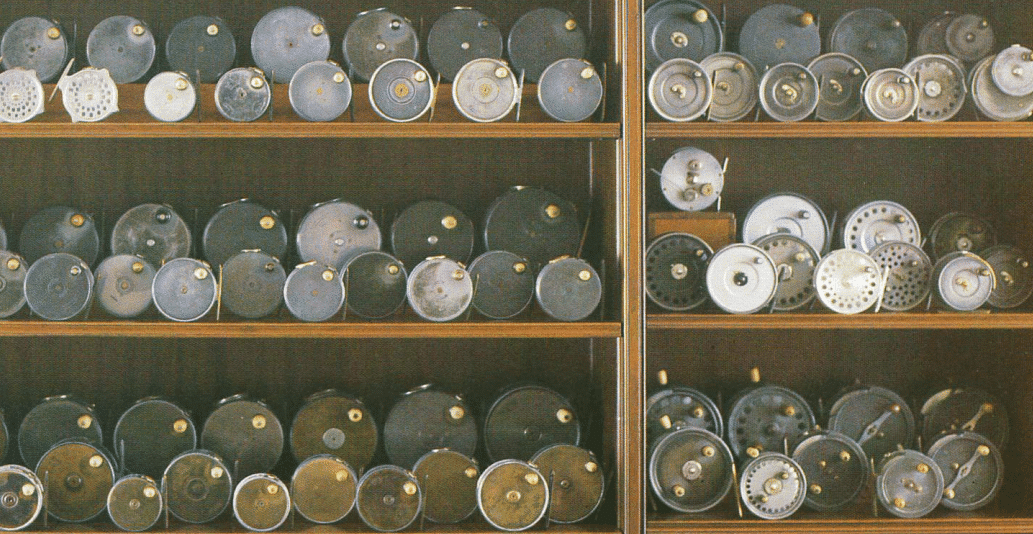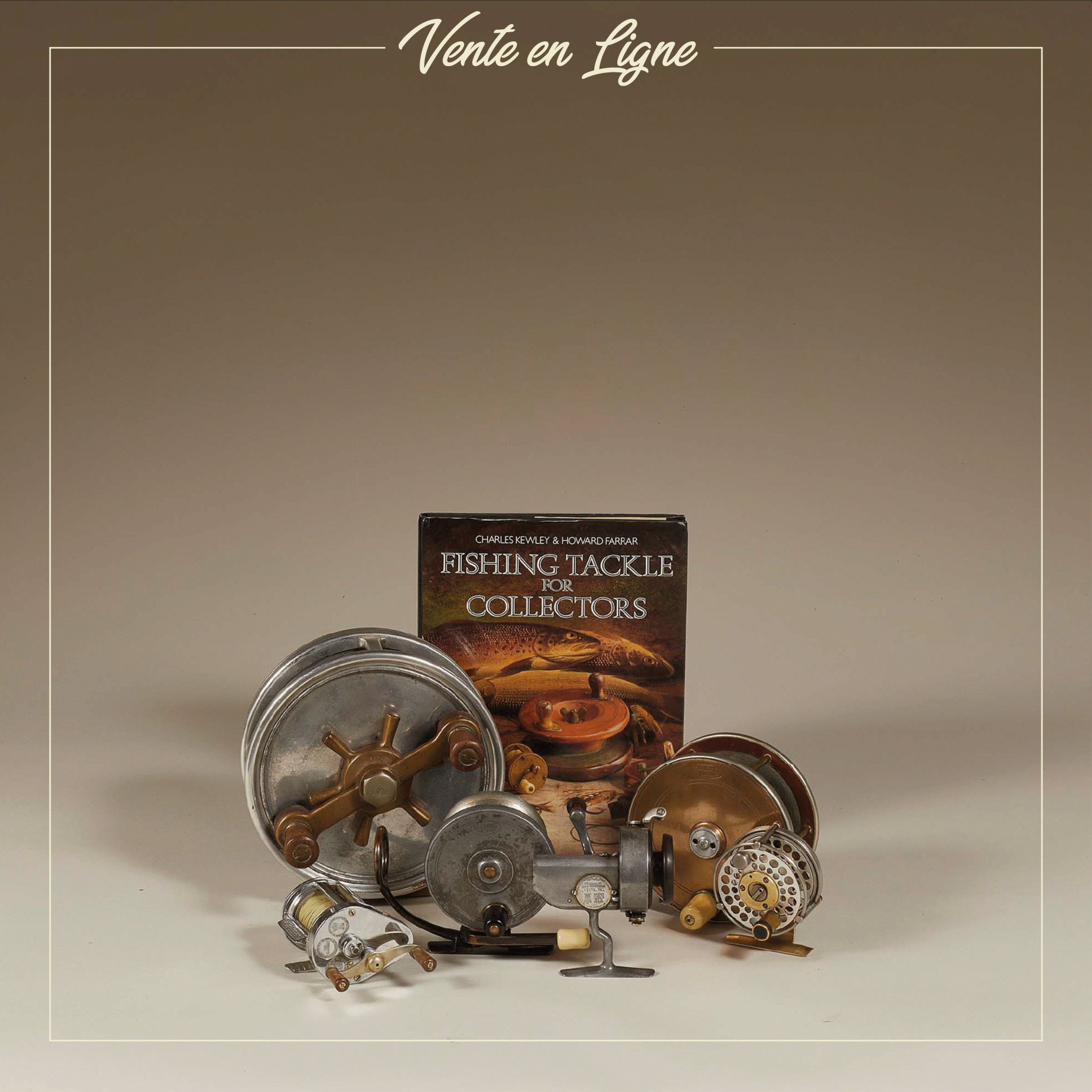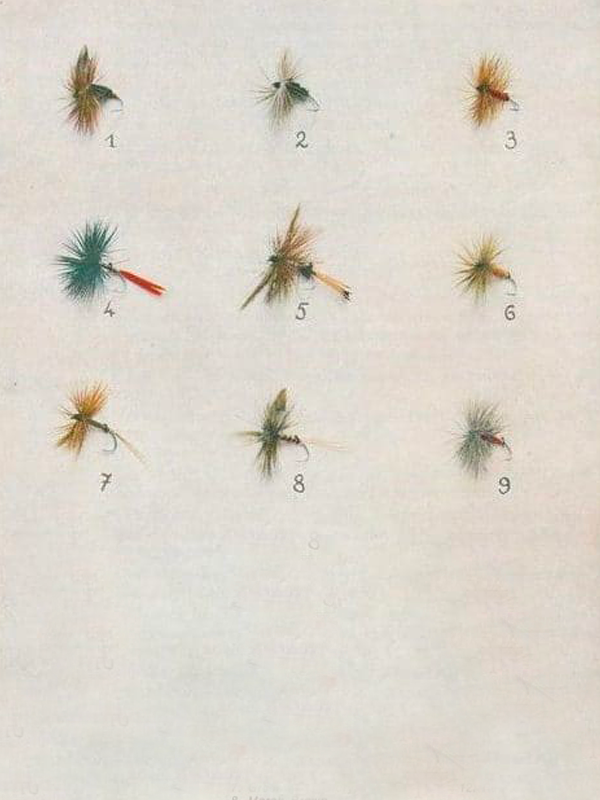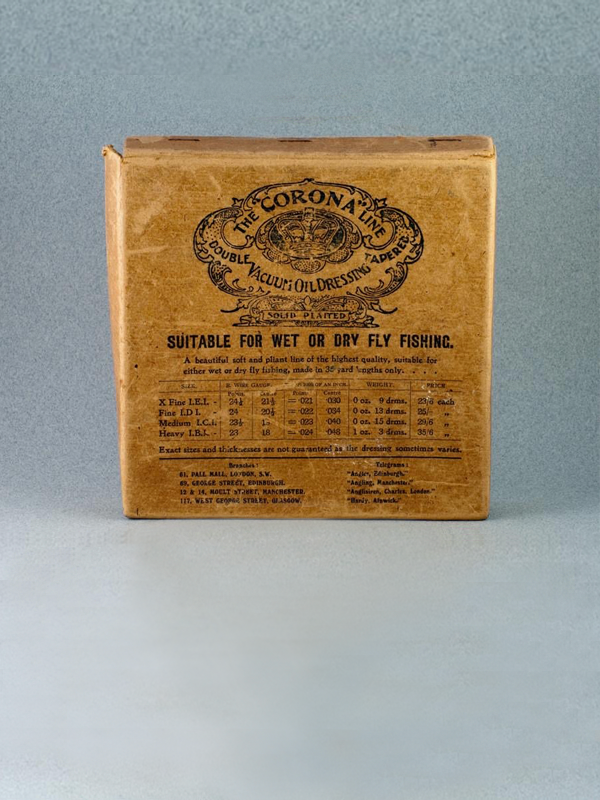
Fly fishing reels
Fly fishing reels

For over half a century, modern technology has offered us reels with progressive, non-adjustable or even “anti-reverse” brakes. All of these reels, with the exception of the Bogdan, have been designed since the late 60s for fly-fishing against large, powerful marine fish such as tarpon, permit, sailfish and tuna or small marlin. To use them in the way we see them used today to fly fish for salmon, steelhead or very large trout is a real crime of lèse-majesté.
Even on the mighty salmon rivers of Norway and Russia, such as the Kola, Yokanga and Kharlovka, when I see almost all anglers using 15 or 16-foot two-handed rods and, above all, reels of the Bogdan, Abel, Sea Master, Bauer or even Billy Pate “anti-reverse” type, with progressive, non-adjustable brakes, I really don’t see how this activity can be described as… “sport” fishing. With these reels, whose latest disc-brake models are even fitted with ABS systems like those on Formula 1 cars, what chance does the fish have of winning the game?… Where’s the sport in that?
And what pleasure can the angler derive from such a disproportionate confrontation? On tarpon, sailfish and permit, I agree that it’s better to have a fly reel with a drag, but on salmon, I can’t remember losing a single fish – and I’ve caught a few big ones in difficult places – due to the lack of a drag on my reels. If the angler can’t stop a salmon, a large sea trout or even a bonefish by using the drag on his fingers and a reel with a simple ratchet, he’d be better off opting for another sport, playing golf or pétanque, but leaving the fish alone.
Let’s not forget that for over a hundred years, from 1860 to 1960, tens of thousands of large and even very large salmon were caught in the British Isles and Norway, at a time when there were no brakes on fly reels. On some models, such as the big Perfect, only a tension regulator could be used to adjust a small amount of pressure on the pawl.
In the event of a sudden and prolonged start-up of a salmon, the angler had to use his fingers or the palm of his hand to slow down the fish’s mad rush. And when you look at the formidable series of salmon weighing over 50 pounds that were caught in Scotland – on the Tay and Tweed rivers in particular – between 1880 and 1910, you have to believe that a good pawl, just enough to prevent the reel from running away, made such feats possible.
And, as Queen Victoria’s officers and the lords and peers of the realm didn’t have permanently broken phalanges, we have to admit that they must have known how to use a reel without a drag. I’ve said it before, and I’ll say it again, flyfishing for salmon with a reel fitted with a progressive, unadjustable and sophisticated drag of the type used on Bogdan, Billy Pate, Loop Evotec and other Abels, leaves the fish no chance.
When we talk about sport fishing, let’s remember, as Hemingway used to say, that it’s the fish that has the hook in its mouth, so let’s not be afraid of banging our phalanges a bit hard on a crank return…
I’ll always remember on the Kharlovka, a good quarter of a century ago, when, after breaking the crank on my old Hardy St. George, Jacques Montupet lent me the “spare” Bogdan he had in his musette.
It was late June on the banks of the Barrel pool, the Kharlovka was very high and the salmon we’d been catching for three days were big, nasty and covered in sea lice. I immediately replaced my St. George with the Bogdan on the heel of my 9-footer and continued to comb the great headwaters of the Barrel…
On the third or fourth cast, badaboum! I hooked a fresh 11/12 kg which decided, after two or three hesitations upstream, to head off full speed towards the Barentz Sea, which I’m sure it had left less than three or four hours before. Jacques had set the Bogdan’s brake to position 7.
If a big fish comes down, he warned me, you can put it on “Bogdan 8 or even 9” by pushing the brake tension lever. As my fish was big and coming down, and in the water up to my suspenders I couldn’t get back to the bank fast enough to try and follow it, I set “Bogdan 9” and asphyxiated it in less than fifty meters.
I stopped him long before he reached the rapids at the tail of the pool, right in the middle of the Barrel. His second start against “Bogdan 9” took him no more than thirty meters, and a third attempt when his poor heart must have been close to exploding, painfully pulled fifteen meters of line out of the reel. I stranded this splendid fish on the pebbles less than ten minutes after his bite.
At no time had my fingers needed to apply the slightest tension to the line or the reel’s inner flanges. I didn’t have to run on the reels to keep up with him, and the fish was there at my feet, defeated not by my skill but by the disc brake technology that Stanley Bogdan incorporates into his reels.
Jacques didn’t understand when I gave him back his Bogdan, handed over my St. George, and carved a small piece of wood from a birch branch to make a “dolly” (removable crank) that would allow me to cast by inserting it into one of the many holes that open up the spool of the St. George. I continued fishing for the rest of the week with a small piece of branch in my pocket as a crank.
The fact of touching wood must have brought me luck, as I caught many more magnificent fish, but all of them, it’s fair to say, gave me a hard time, made me run over the pebbles and abraded the pulp of the index and middle fingers of my left hand. But I think I’ve earned these salmon and beaten them fair and square.
My first bonefish, which remains my biggest, I caught in October 1976 on the Key Biscayne flats in front of the Miami Beach waterfront buildings. It weighed twelve pounds minus one ounce (thirty grams) and was entered in the Miami Herald’s permanent contest as the second biggest caught on a fly that year.
When I show pictures of this fish with rod and reel, many of my fishing friends don’t want to believe that I caught it with my old Hardy Princess… And even then, this fish wasn’t tracked with the boat, because it was “tailing” on a very shallow flat, and the skiffs of the time didn’t allow you to advance in less than 40 centimeters of water, as is the case today. So I approached him on foot, and by the time I managed to get him to bite, I was a long way from the boat. His first start unwound a little over a hundred meters of backing – I know this because I’d made a mark with an indelible black felt-tip pen on the white Dacron –, as I reeled, I tucked the WF6F line onto the reel, and off he went again, about fifty meters of backing out that time.
Finally, on his last and third start-up, which I braked like the others by pressing my fingers inside the reel flange, he didn’t take more than thirty meters of spare line. So, when I see the majority of flats anglers today catching “naive” bonefish from the Seychelles, and rarely weighing more than five pounds, with 8 rods and Billy Pate, Abel or Bauer reels, I don’t see what’s so glorious about it? Apart from the difficulty of getting them to bite, when they are highly educated, as in the Florida Keys, the main interest of bonefish fishing is to listen to the reel’s song and try to stop them with your fingers. If you tell me you like to see them jump out of the water, you’ll have to find something else.




